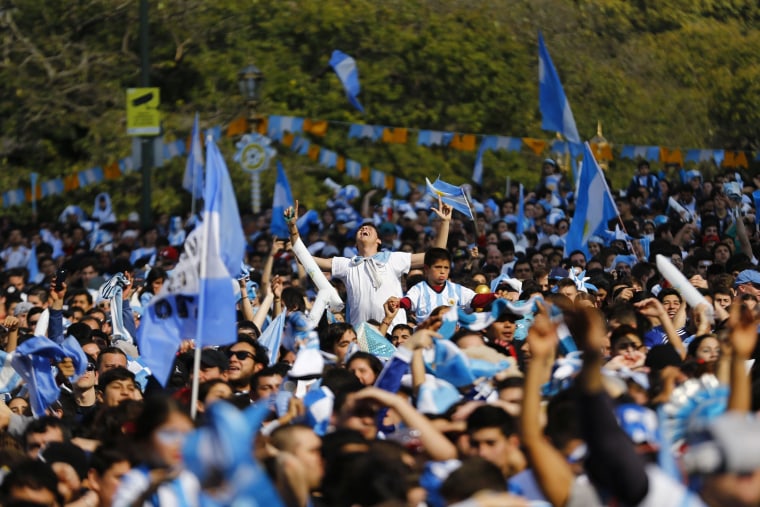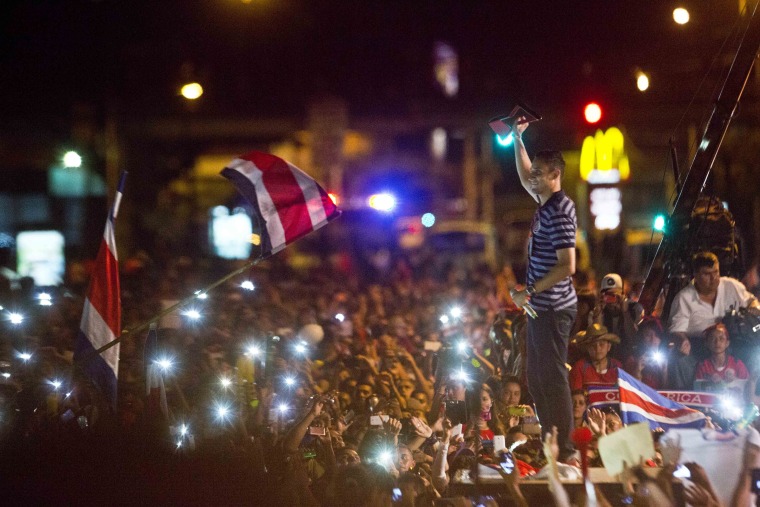MEXICO CITY, MEXICO -- Germany's victory over Argentina in the World Cup final should be a source of sadness for Latin Americans. Germany not only won the tournament, but became the first European team in the history of the World Cup to win the top soccer prize while playing in the American continent.
It’s true, a lot of Latin Americans are sad about this. With the exception of Brazil, who did not want to see their hated rival win the championship, the vast majority of Latin Americans wanted Argentina to win. The cries of Argentine players and fans after the final match in the Maracana stadium were painful to witness. Although we often accuse Argentines of arrogance, much of the continent supported their national team in the match against Germany, particularly because we respect and admire Leo Messi.
Colombia, Costa Rica, Chile, Uruguay, Mexico played well, Argentina made it to the finals and Brazil pulled off the World Cup. But let's take a page from Germany for 2018.
But beyond the disappointing final result, and despite Brazil’s humiliating loss to Germany before that, Latin Americans are generally happy with the World Cup. There is a collective pride in the fact that Brazil pulled off the month-long event without any of the major crises that critics warned would befall the tournament. Brazil was a terrific host, and because of that, Latin America stands tall.

The same cannot be said of Brazil’s national football team, of course. Admired throughout the world for its five previous World Cup victories, Brazilian football is in a dark hole after its 7-1 loss to Germany and its failure even to win third place against Holland. Who knows the reason for this stunning defeat.
Some people suggest that the failure is a metaphor for a society that pretended to live an economic miracle that has turned out to be what Peruvian novelist Mario Vargas Llosa calls a “mirage.” Brazil’s mediocre football and its slowing economy have come down to earth.
One notable fact about the U.S. team that went to the World Cup is the diversity of its players —something that does not often happen on Latin American teams.
Other say the problem is that Brazil’s best players are still very young when they go to play in Europe, and many of them never get to develop to their fullest potential and play with the best European teams. Or, is it that the Brazilian leagues are very weak and not supported by local fans —a symptom of lack or organization? These are some of the issues Brazilian football will have to examine in the coming months, as they seek to rebuild their team and to become the power in world football that they have been for decades.
Two other Latin American teams did not fare well—Honduras and Ecuador, both of which coincidentally were trained by Colombian coaches, while the coach of the Colombian team was an Argentine.
But the rest of the Latin American national teams left the 2014 World Cup with a smile of satisfaction: Colombia, Costa Rica, Chile, Uruguay and Mexico all played well. Even Argentina can feel good about making it to the finals and almost getting the championship. The team was just five minutes from getting to the penalties, and putting into practice their trade —as they did against the Netherlands.

And of course, this list of teams on the continent that brought joy to their country must include the United States. Forget the debate as to whether U.S. soccer has reached maturity, whether it’s here to stay or will be embraced by U.S. television, the fact is that a record number of Americans watched the 2014 World Cup. And they did so all across the United States, in bars and offices and public squares, people in the United States watched and cheered their national team.
One notable fact about the U.S. team that went to the World Cup is the diversity of its players —something that does not often happen on Latin American teams. There were not only the players of Hispanic origin —Alejandro Bedoya with Colombian roots, and Omar Gonzalez, whose parents are Mexican— but five players are of German origin, all the children of African-American fathers who served in Germany with the U.S. Army. This is something that is becoming more common in international soccer —Belgium and Switzerland also have diverse teams.
In Latin America, the problem of weak leagues and half-filled stadiums are red warning flags that must be addressed. It’s unhealthy for soccer.
There is no single reason that explains the relative success of Latin American teams. They have their home-grown talent and individual stars. Some players undoubtedly have been helped by playing in highly competitive European leagues. And who knows, maybe there was a bit of a home-court advantage. While local Latin American leagues often lack for support (because the best players are in Europe and the level of the game is weak), Latin American fans turned out en masse to cheer the region’s national teams.
One thing is for sure: it’s no coincidence that Germany won the World Cup. It was the best team, coming from one of the more balanced professional leagues in Europe. The German League does not have Arab sheiks, Russian oligarchs or American millionaires as team owners spending ridiculous amounts of money to buy players. The League continues to fill stadiums, and each team maintains a strong local connection. Supporters feel the team has roots and ties to the community. Every team plays with a majority of German players —unlike, for example, the English Premier League, where champions Manchester City play with at most two English players as starters.
In Latin America, the problem of weak leagues and half-filled stadiums are red warning flags that must be addressed. It’s unhealthy for soccer. Thanks to astute coaches and talented players, Latin America did well in this World Cup and emerged with its head held high. But it’s important to recognize the roots of the German victory, and rather than cry for Argentina, begin to prepare for 2018 with better organization and the support of local fans.
